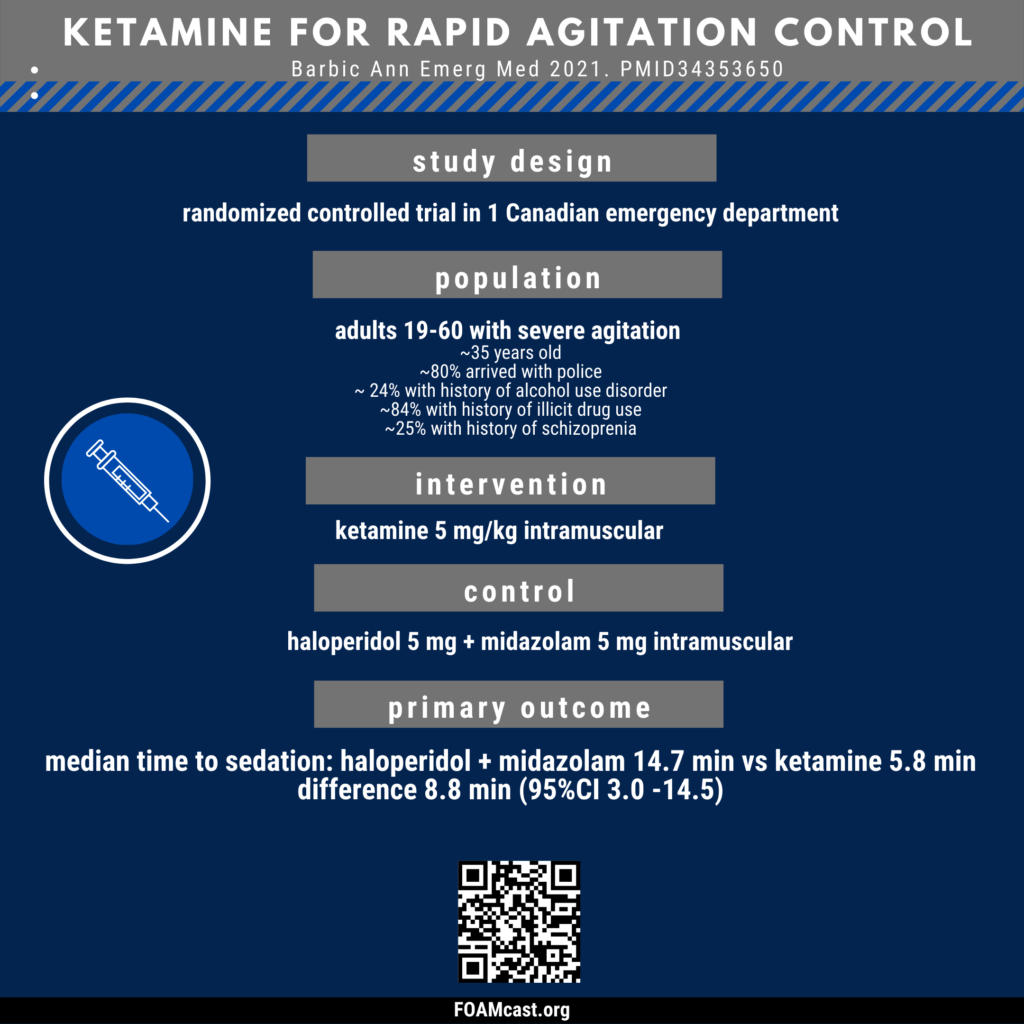Apple Podcasts , Spotify, Listen Here
Intramuscular chemical sedation is commonly used in the emergency department (ED) for severe agitation and physical assault when other attempts at de-escalation and agitation control (verbal de-escalation, space, etc) are unsuccessful. The “cocktails” people use are often institution-based. In this podcast, we review commonly used intramuscular agents along with recent papers including ketamine, droperidol, and choice of benzodiazepines.

Droperidol has been cited as working very quickly, however, several studies show that the onset is in the ballpark of 15-20 minutes (even at 10 mg IM).
- Cole et al. A Prospective Study of Intramuscular Droperidol or Olanzapine for Acute Agitation in the Emergency Department: A Natural Experiment Owing to Drug Shortages. Ann Emerg Med. 2021 Aug;78(2):274-286. PMID: 33846015.
- Isbister GK et al. Randomized controlled trial of intramuscular droperidol versus midazolam for violence and acute behavioral disturbance: the DORM study. Ann Emerg Med. 2010 Oct;56(4):392-401.e1. doi: 10.1016/j.annemergmed.2010.05.037. PMID: 20868907.
- Calver L et al. The Safety and Effectiveness of Droperidol for Sedation of Acute Behavioral Disturbance in the Emergency Department. Ann Emerg Med. 2015 Sep;66(3):230-238.e1. PMID: 25890395.
A recent randomized controlled trial of ketamine versus haloperidol + midazolam by Barbic et al demonstrates impressive time to agitation control for ketamine.

